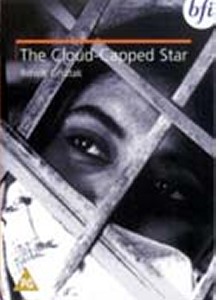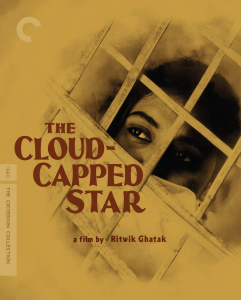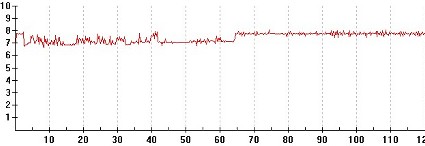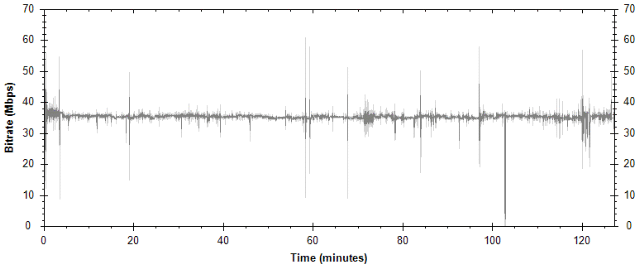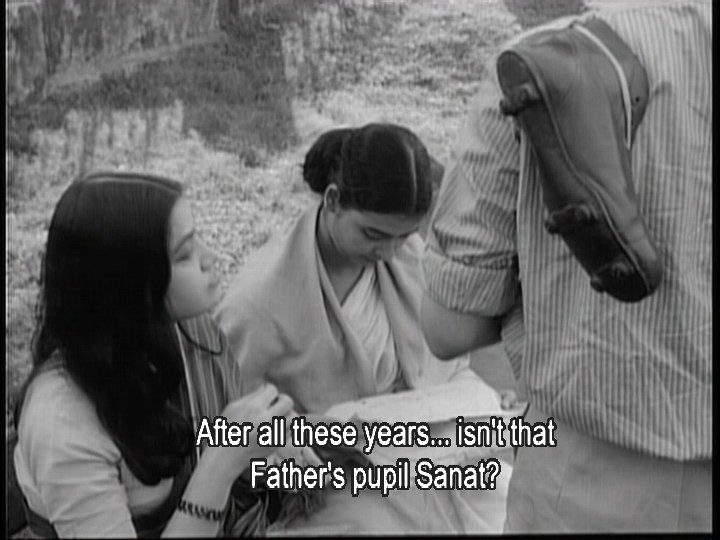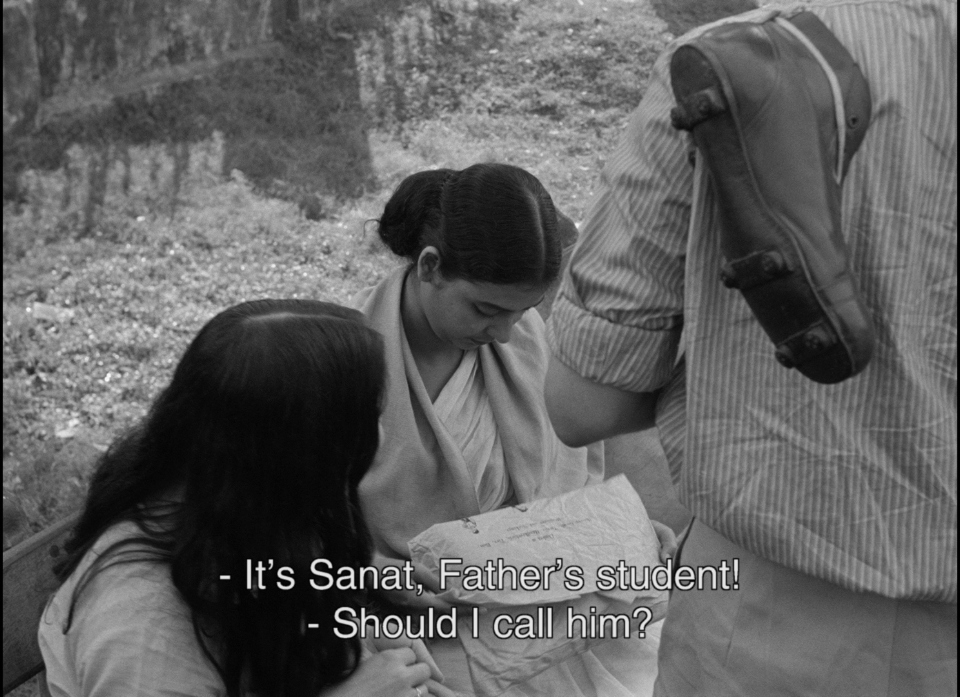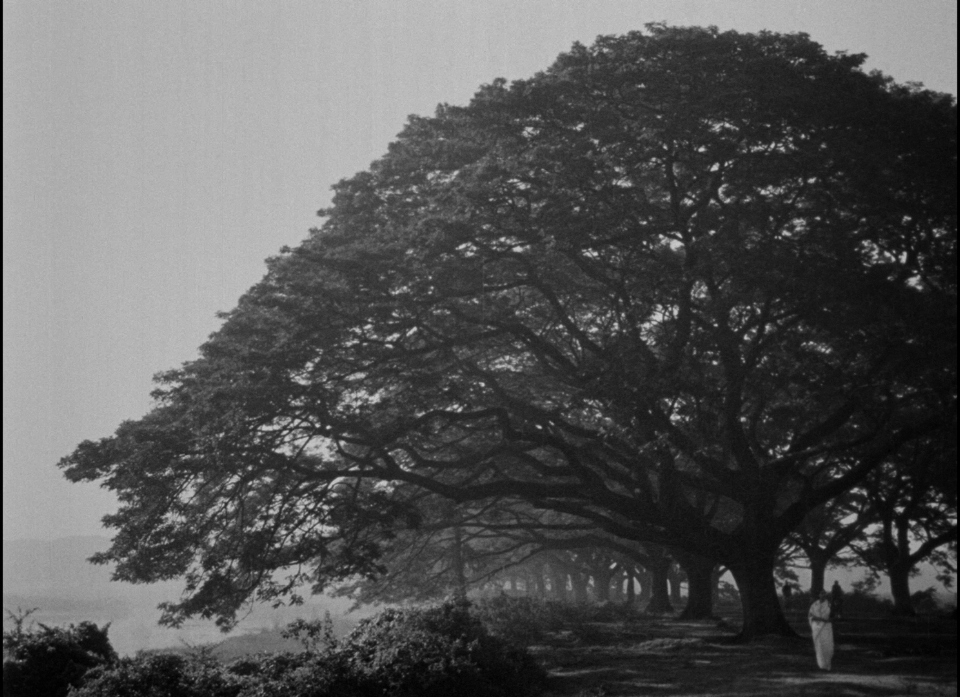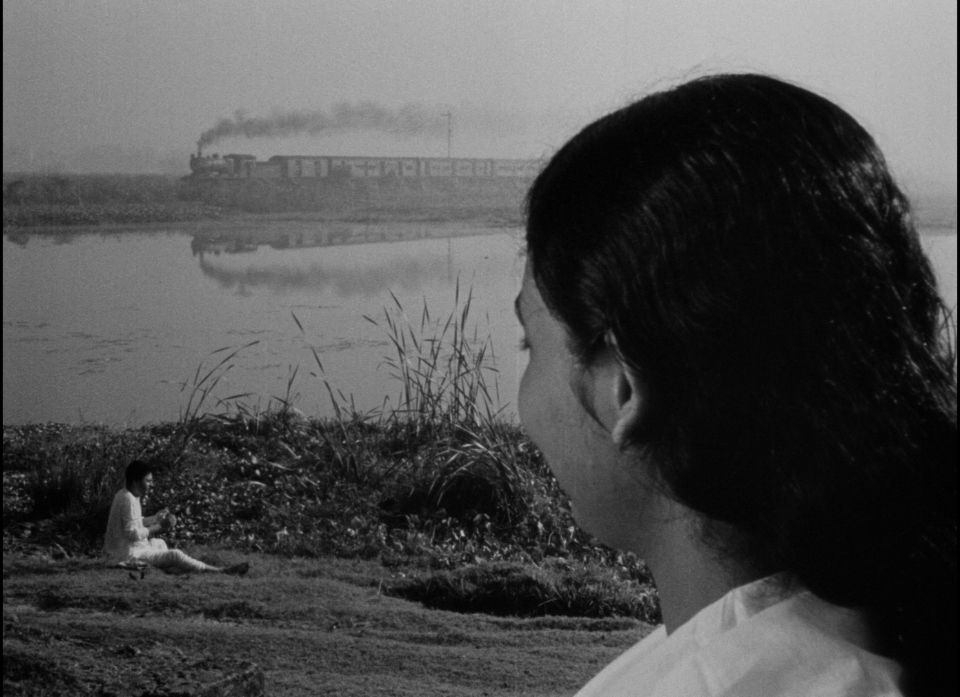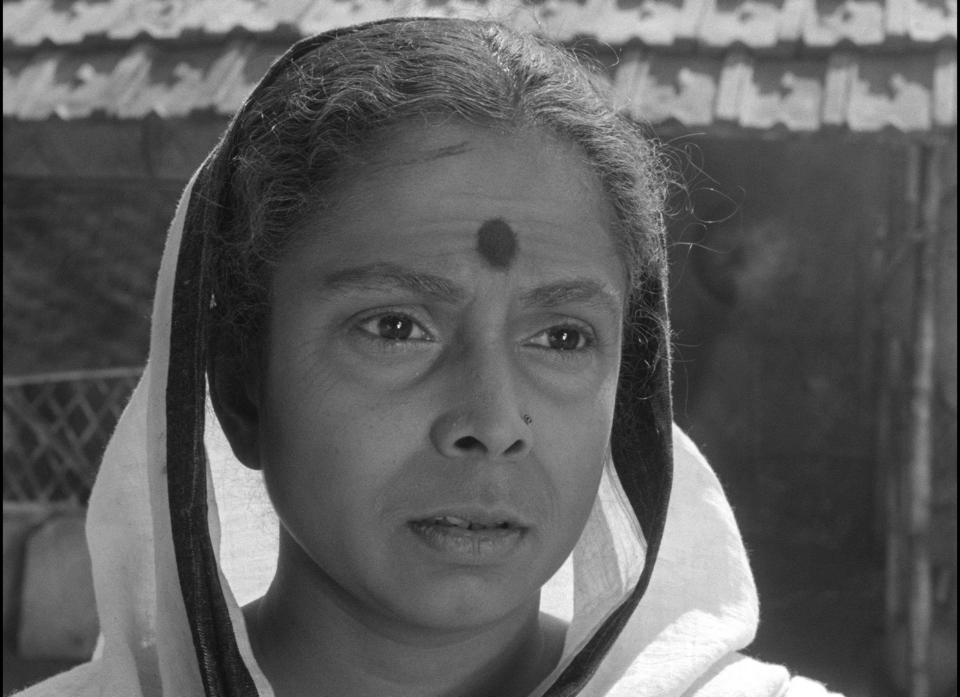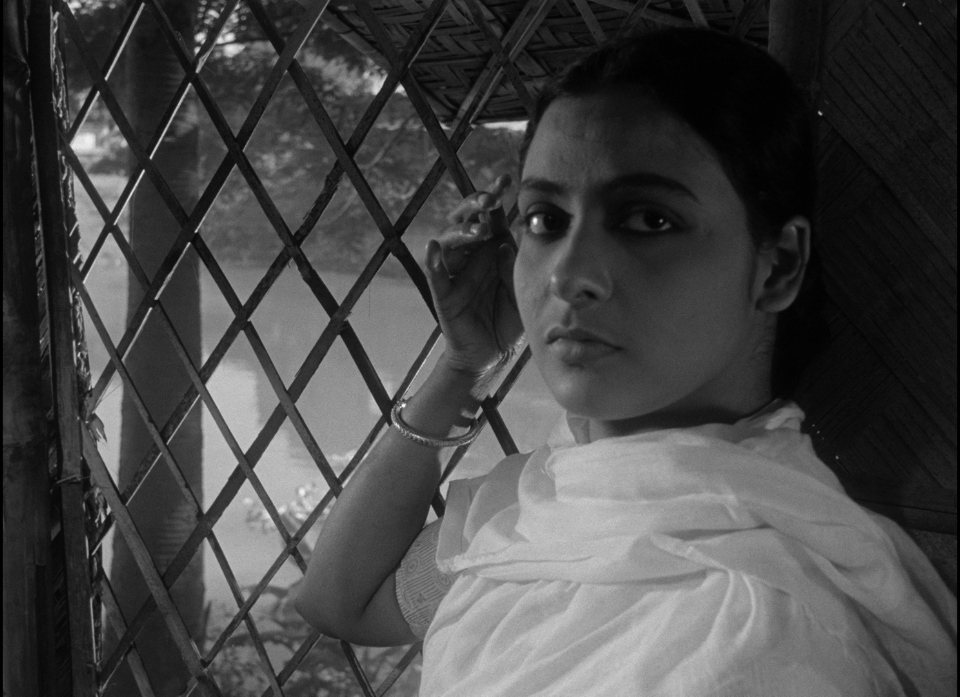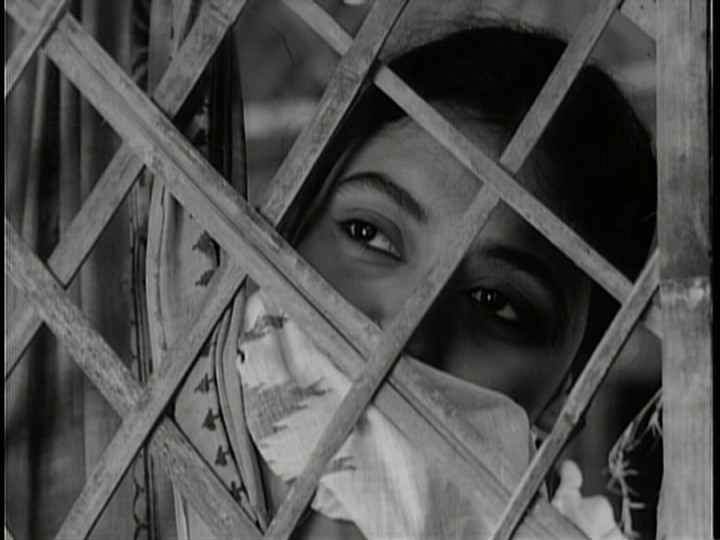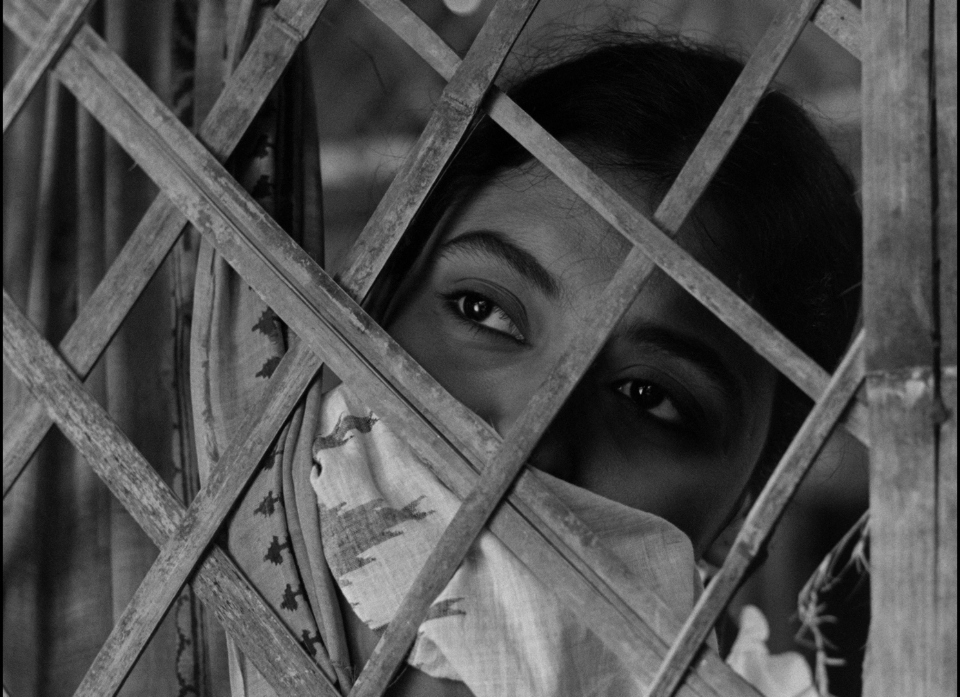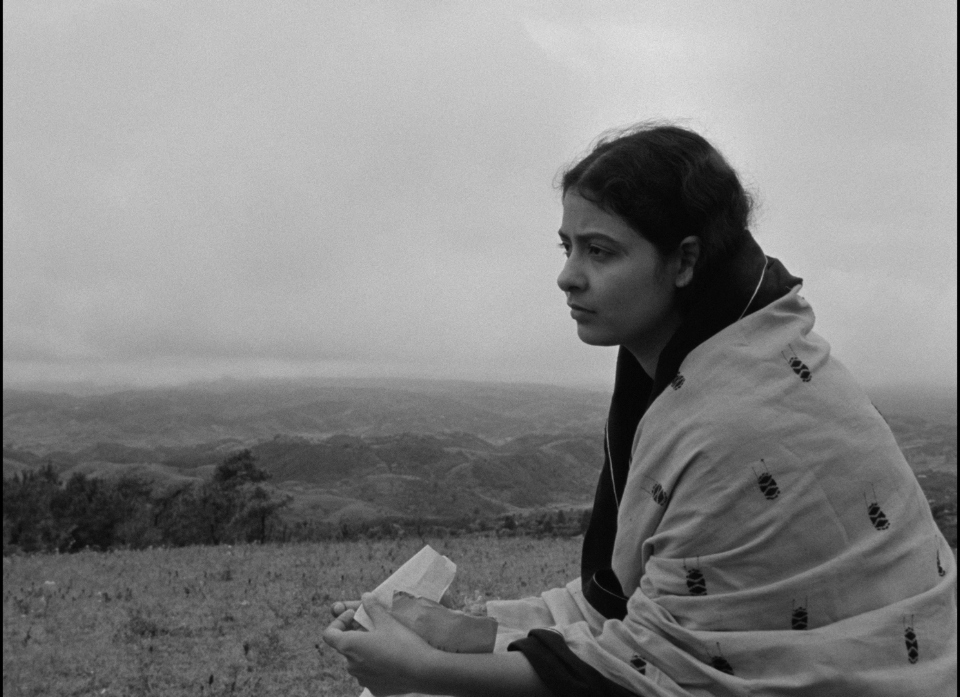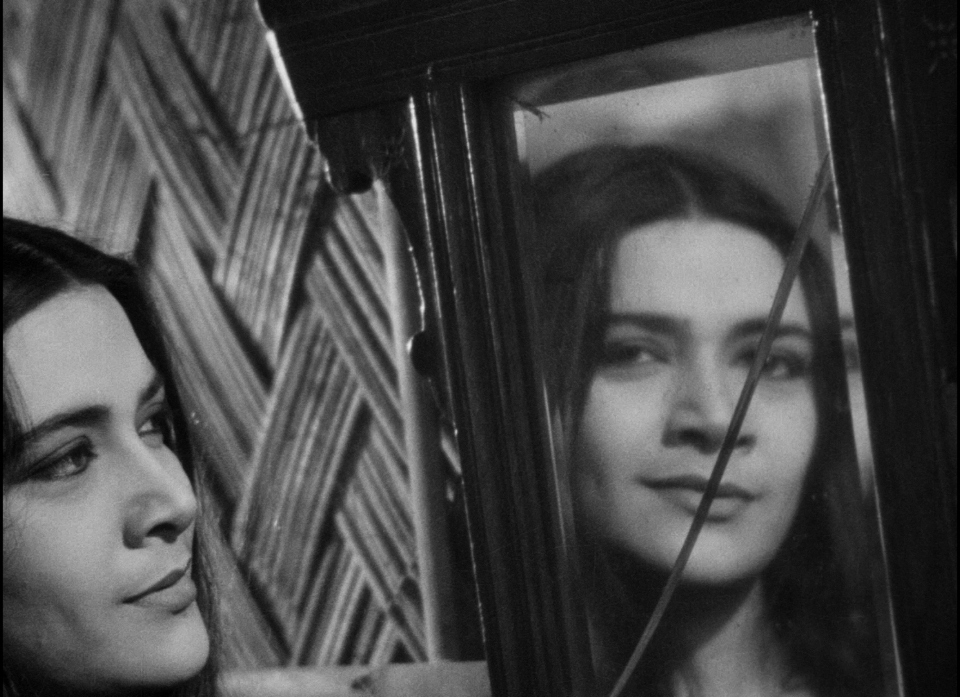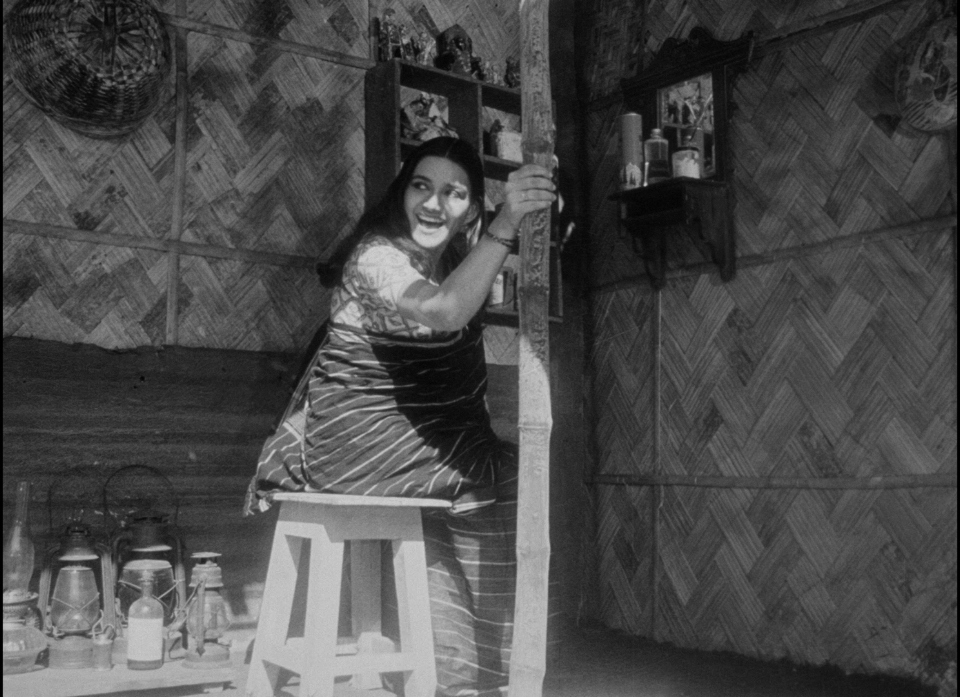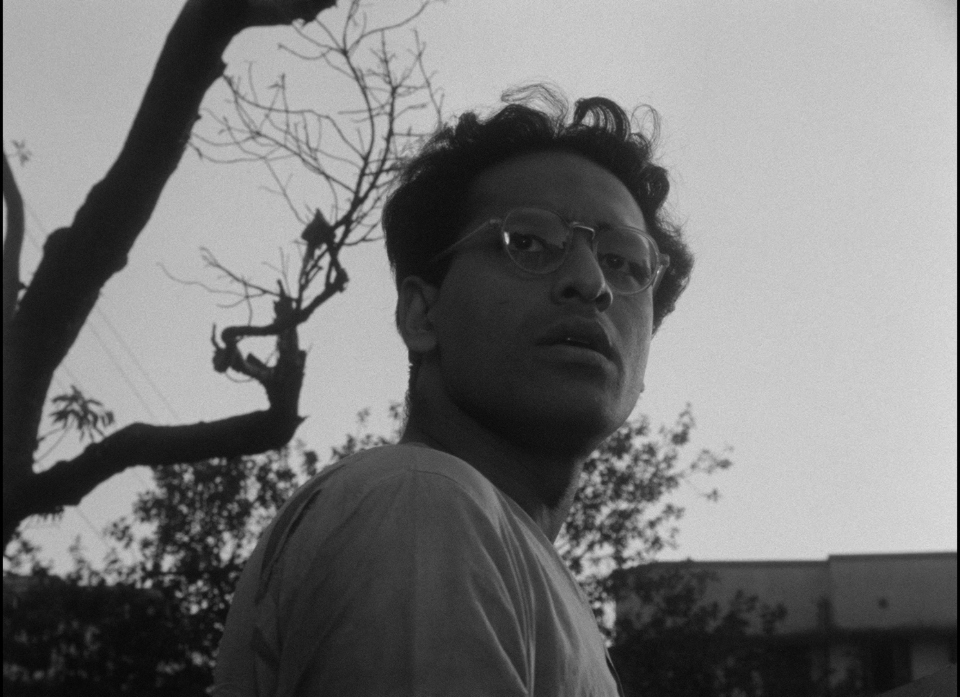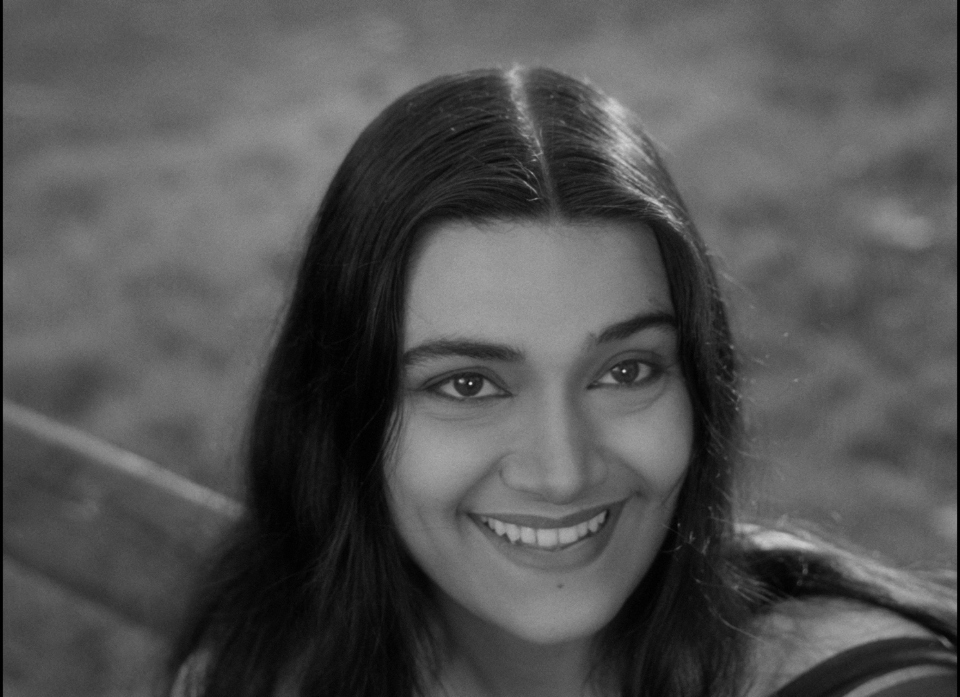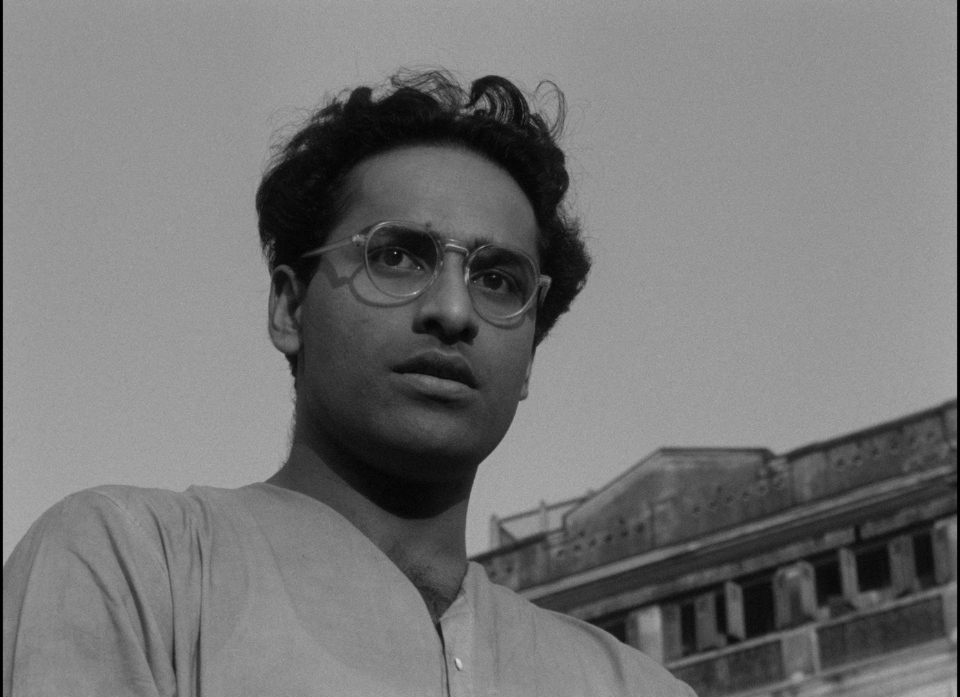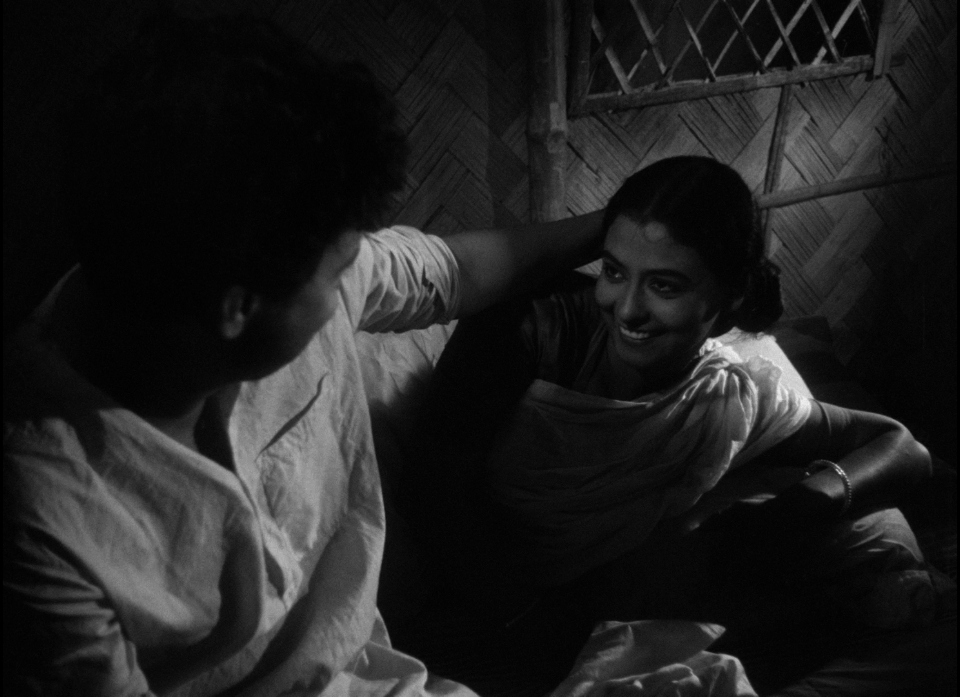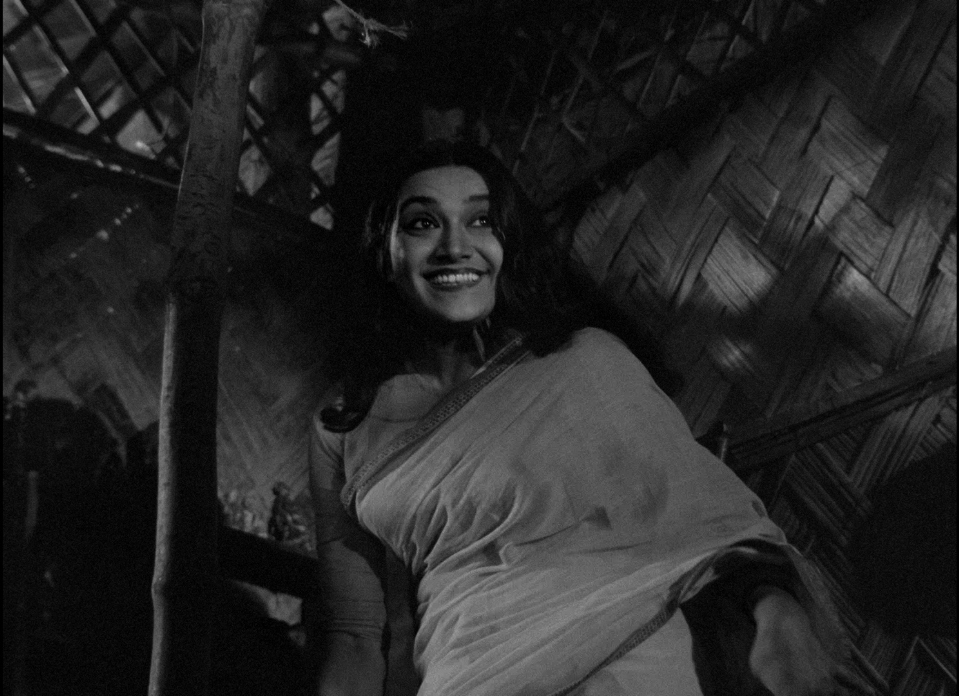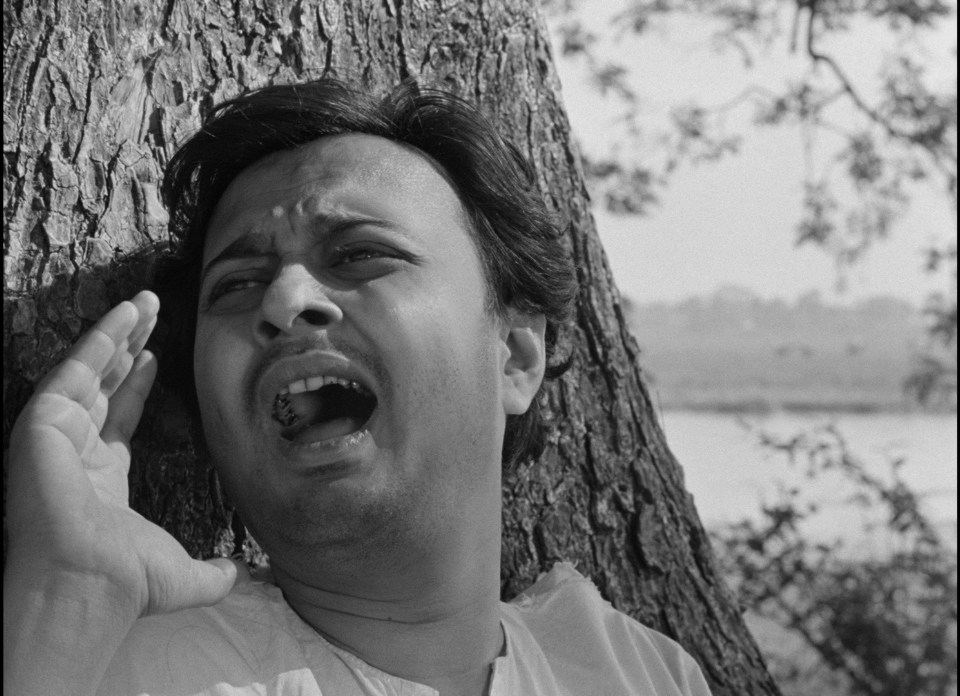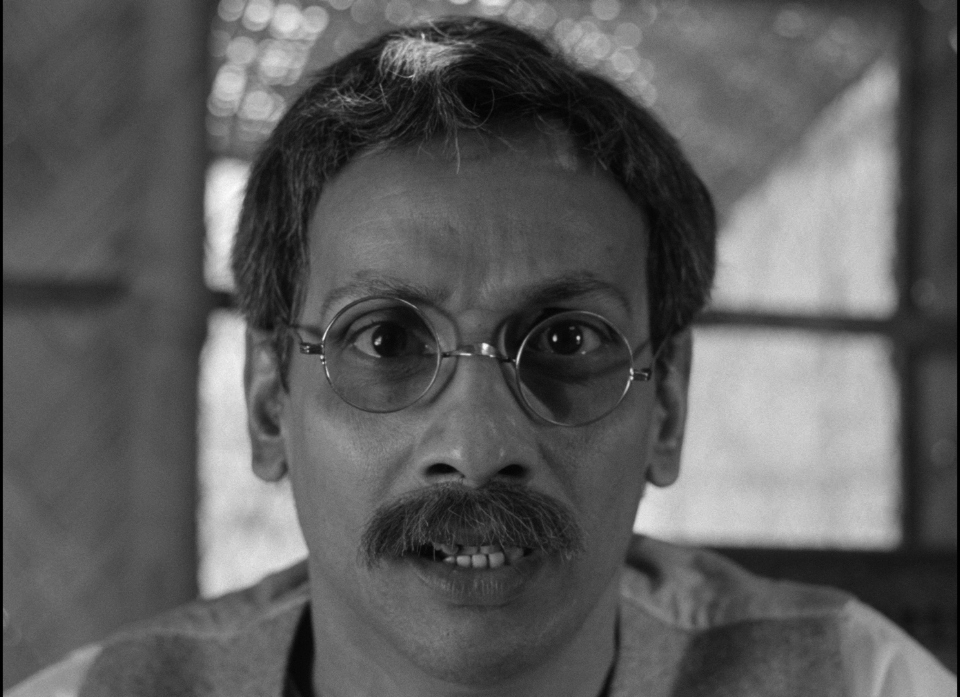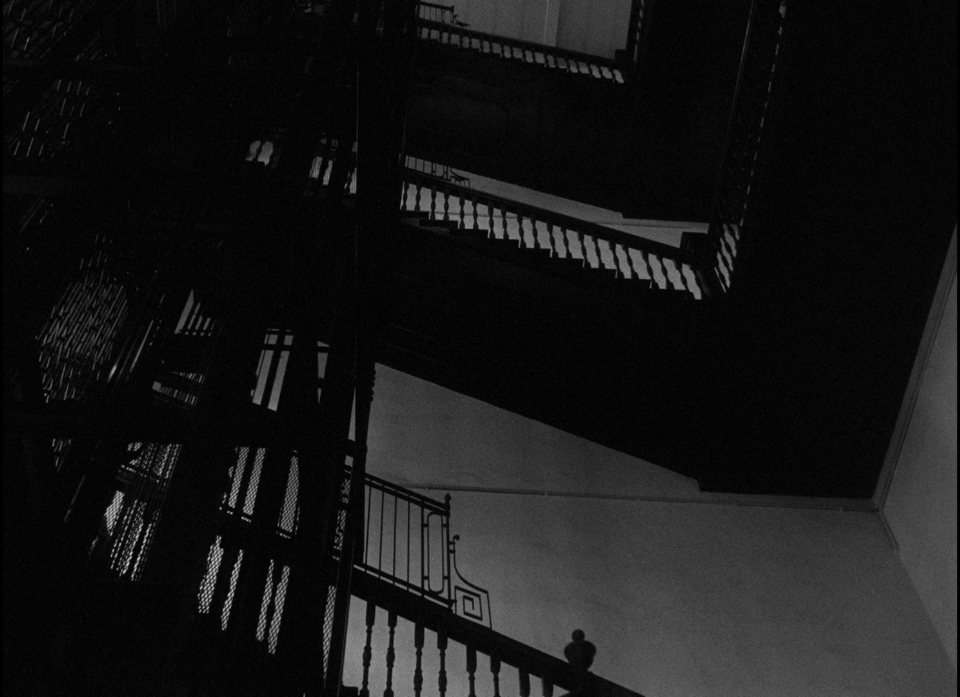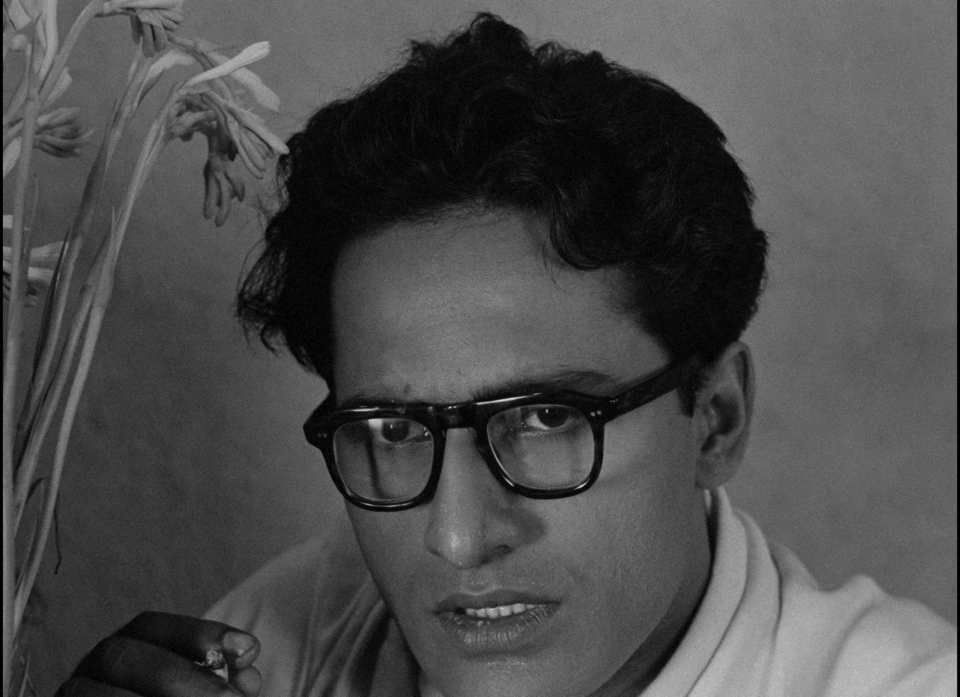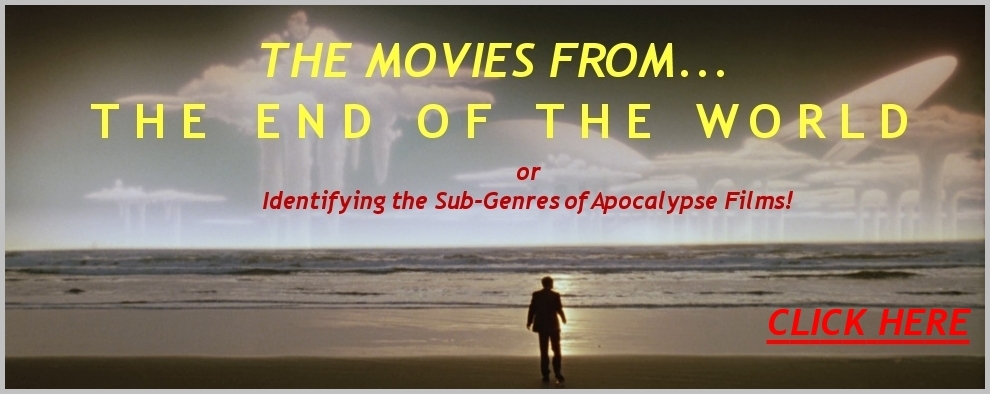|
We have started a Patreon page with the hopes that
some of our followers would be
willing to donate a small amount to keep DVDBeaver
alive. We are a tiny niche, so your
generosity is vital to our
existence.
We are talking about a minimum of
$0.10 - $0.15 a day, perhaps a
quarter (or more) to those who won't
miss it from their budget. It
equates to buying DVDBeaver a coffee
once, twice or a few times a month.
You can then participate in our
monthly
Silent
auctions,
and have exclusive access to many 'bonus' High Resolution screen captures - both
4K UHD
and
Blu-ray
(see
HERE). |
![]()
![]()

![]()
![]()
|
Search DVDBeaver |
S E A R C H D V D B e a v e r |
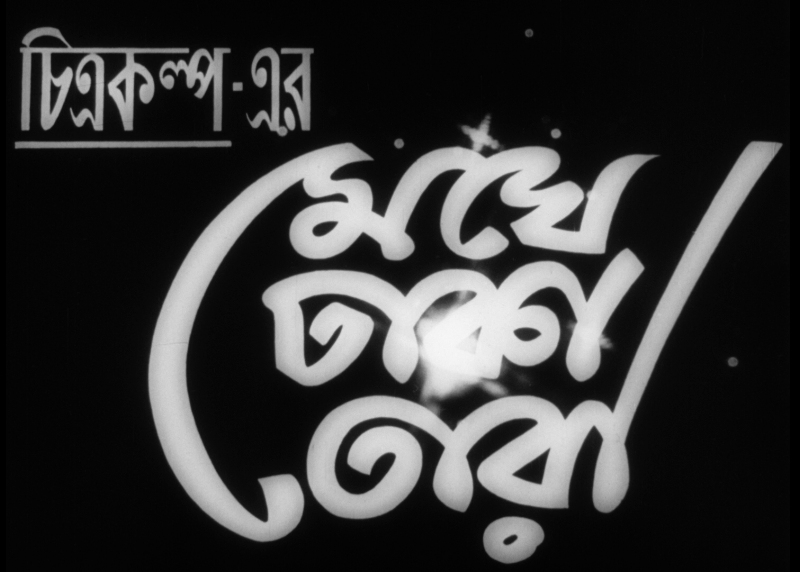
(aka 'Meghe Dhaka Tara" or "The Cloud-capped Star")
directed by
Ritwik Ghatak
India 1960
|
Ritwak Ghatak is generally regarded as one of the big three of the Indian New Wave (and Indian cinema at large), along with Satyajit Ray and Mrinal Sen, the latter whom is he’s perhaps closest aligned with given shared political leanings, an artful talent for incisive social commentary, and most of all, for auteurist experimentality. With The Cloud-Capped Star (1960), Ghatak took the melodrama genre along with its coherent, causally driven plot structures and relegated it as the backdrop of something much further removed from the conventional. Throughout, the personal is harmonized with the socio-historical condition, and this duality is a key component of the film’s accomplishments.
Situated in Calcutta, a straight-forward plot presents Neeta as a middle-class daughter encumbered by increasing demands to support her self-centered family members. She augments the income gained by her elderly father, while she moves toward the final year of her education. Her struggles are made bearable by hope, primarily founded on two loved ones—her brother Shankar, who admittedly takes advantage while waiting for his singing career to blossom, and her fiancé, Sanat, who pursues his Ph.D. as part of a promising future.
While there is immediacy in an unfolding plot of multi-dimensional characters, the story is as much elsewhere, in an allegory of post-partition India. Ghatak manages to take the “plastic material” of objects and people and charge them relationally by creating forceful situational congruencies. In this way a letter may later become a cloth and then a letter again, a sister may become some other neighborhood girl, a picture, often glimpsed, becomes a nostalgic index of childhood within which the pictured hills are hope itself, and all the while, an occasional passing train gathers voice with its conspicuous and emblematic passings, first harmonizing with a brothers singing, and then rising shrilly to disrupt conversation. And when the train is not passing, there’s the evidence—tracks, stations, and faint traces of its sound in a carefully constructed and manipulated soundscape.
One last, spoiler-free, example may best exemplify the multi-level magic that Ghatak is able to muster. Soon after introducing Neeta, and incidentally her sandal that’s in need of mending, there is a shot transition to her house before she’s arrived where her father is discussing some dark-skinned neighborhood girl, this girl will appear in passing much later and exchange brief words with Neeta, after which the camera stays with her, not Neeta for an intriguing, introspective interval, and then later on and in passing, this small girl gets mistaken by Sanat as his sister whom he asks for money before realizing his “error,” and then, finally, when he doesn’t mistake her, and she pauses, recognizing him, and adjusts her sandal strap that just came loose, and then walks awkwardly down the path that Neeta did at the film’s beginning. There are many examples of inversions and mappings that take place and lend a resonating quality to this remarkable film. The Cloud-Capped Star is a master work that invites subsequent viewings and vital contemplation. |
Posters
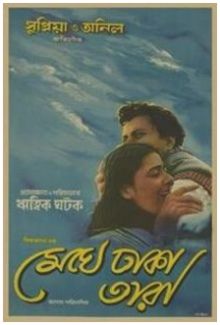 |
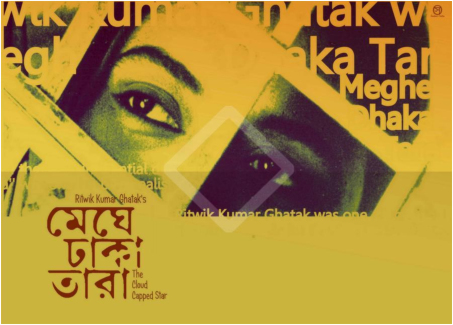 |
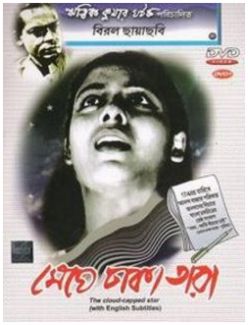 |
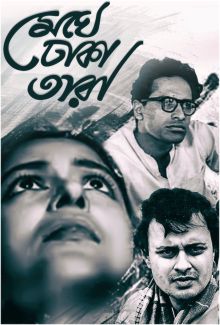 |
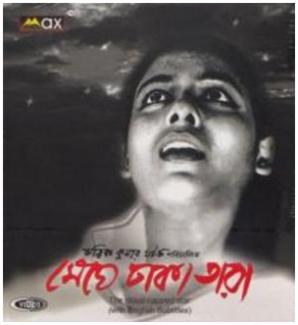 |
Latest Theatrical Release: Singapore 5 April 1997 (Singapore International Film Festival)
Reviews More Reviews DVD Reviews
Comparison:
BFI - Region 2 - NTSC vs. Criterion - Region 'A' - Blu-ray
| Box Cover |
|
|
| Distribution | BFI - Region 2 - NTSC | Criterion - Region 'A' - Blu-ray |
| Runtime | 2:01:20 | 2:07:10.039 |
| Video |
1.33:1
Original Aspect Ratio Average Bitrate: 7.47 mb/s NTSC 720x480 29.97 f/s |
1. 37:1 1080P Dual-layered Blu-rayDisc Size: 46,005,192,165 bytesFeature: 37,706,311,680 bytes Video Bitrate: 35.43 MbpsCodec: MPEG-4 AVC Video |
|
NOTE: The Vertical axis represents the bits transferred per second. The Horizontal is the time in minutes. |
||
| Bitrate: |
|
|
| Bitrate Blu-ray: |
|
|
| Audio | Bengali (Dolby Digital 1.0 Mono) |
LPCM Audio Bengali 1152 kbps 1.0 / 48 kHz / 1152 kbps / 24-bit |
| Subtitles | English, None | English, None |
| Features |
Release Information: Edition Details: • Derek
Malcolm Introduction (7:26) |
Release Information: Studio: Criterion
1. 37:1 1080P Dual-layered Blu-rayDisc Size: 46,005,192,165 bytesFeature: 37,706,311,680 bytes Video Bitrate: 35.43 MbpsCodec: MPEG-4 AVC Video
Edition Details: • New conversation between filmmakers Saeed Akhtar Mirza and Kumar Shahani (28:40)• Stills gallery featuring rare photographs related to director Ritwik Ghatak’s life and work, curated by writer and photographer Nabarupa Bhattacharjee • PLUS: An essay by film scholar Ira Bhaskar New cover by F. Ron My
Transparent Blu-ray Case Chapters 15 |
| Comments: |
NOTE:
The below
Blu-ray
captures were taken directly from the
Blu-ray
disc.
On their
Blu-ray,
Criterion use a linear PCM mono track (24-bit) in the original Bengali
language. It advances over the DVD in the film's audio and music by
Jyotirindra Moitra (Charulata)
but can show some weakness in the high-end although this is more
noticeable in the music. Criterion offer optional English
subtitles on their Region 'A'
Blu-ray.
The Criterion
Blu-ray
has supplements.
The Cloud-Capped Star
is one of the greatest films to ever come out on India (that includes
the work of Satyajit Ray - which signifies its importance). It's tragedy
along the lines of Shakespeare and the light and shadow play are
absolutely brilliant and impacting. I am so impressed with this new
Criterion Blu-ray
***
ON THE DVD (2002): A rare
NTSC DVD from BFI!
Ghatak's
films have been allowed to deteriorate but the master used here
is in good condition. Despite the slight damage that shows up more
prominently in the last 10 minutes of the film (but is still
negligible,) this is a fine release from BFI. Contrast does fluctuate
occasionally, but the image has some strikingly sharp moments. The
subtitles ate wonderfully clear, unobtrusive and removable. Audio is a
shade inconsistent, but still acceptable and the Derek Malcolm intro is
good fodder for understanding this complex filmmaker and this
astonishing film. Bravo to BFI for bringing this out, most likely
knowing it would not be a blockbuster on the spreadsheets. This is a
great film and they have treated it with respect and admiration. I give
an enthusiastic thumbs up!
NOTE:
|
BFI - Region 2 - NTSC
 |
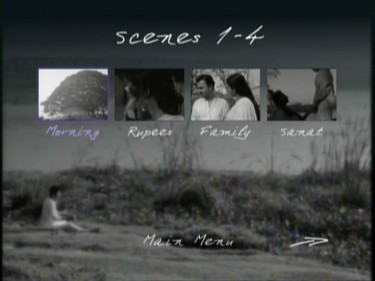 |
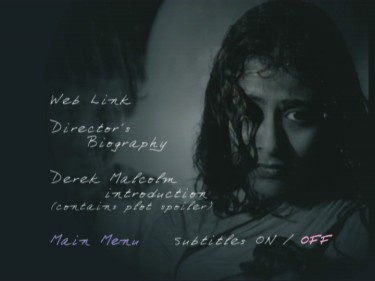 |
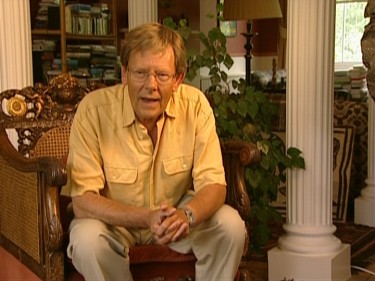 |
Criterion - Region 'A' - Blu-ray
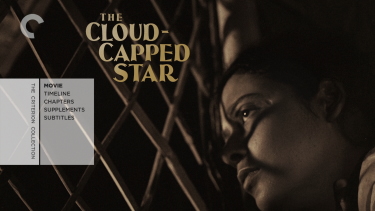 |
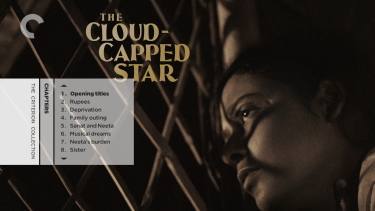 |
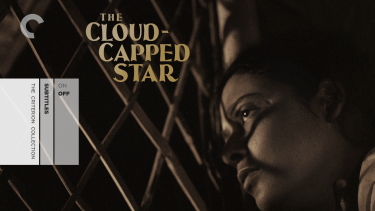 |
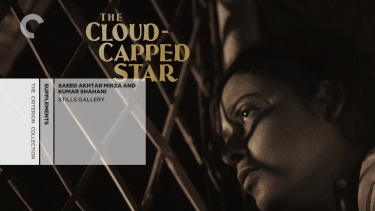 |
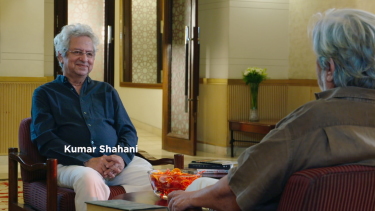 |
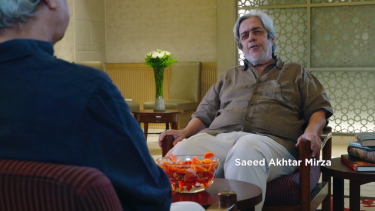 |
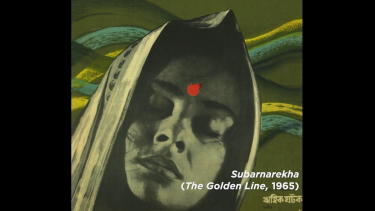 |
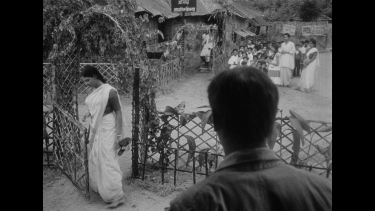 |
CLICK EACH BLU-RAY CAPTURE TO SEE ALL IMAGES IN FULL 1920X1080 RESOLUTION
|
1) BFI - Region 2 - NTSC TOP2) Criterion - Region 'A' - Blu-ray BOTTOM |



